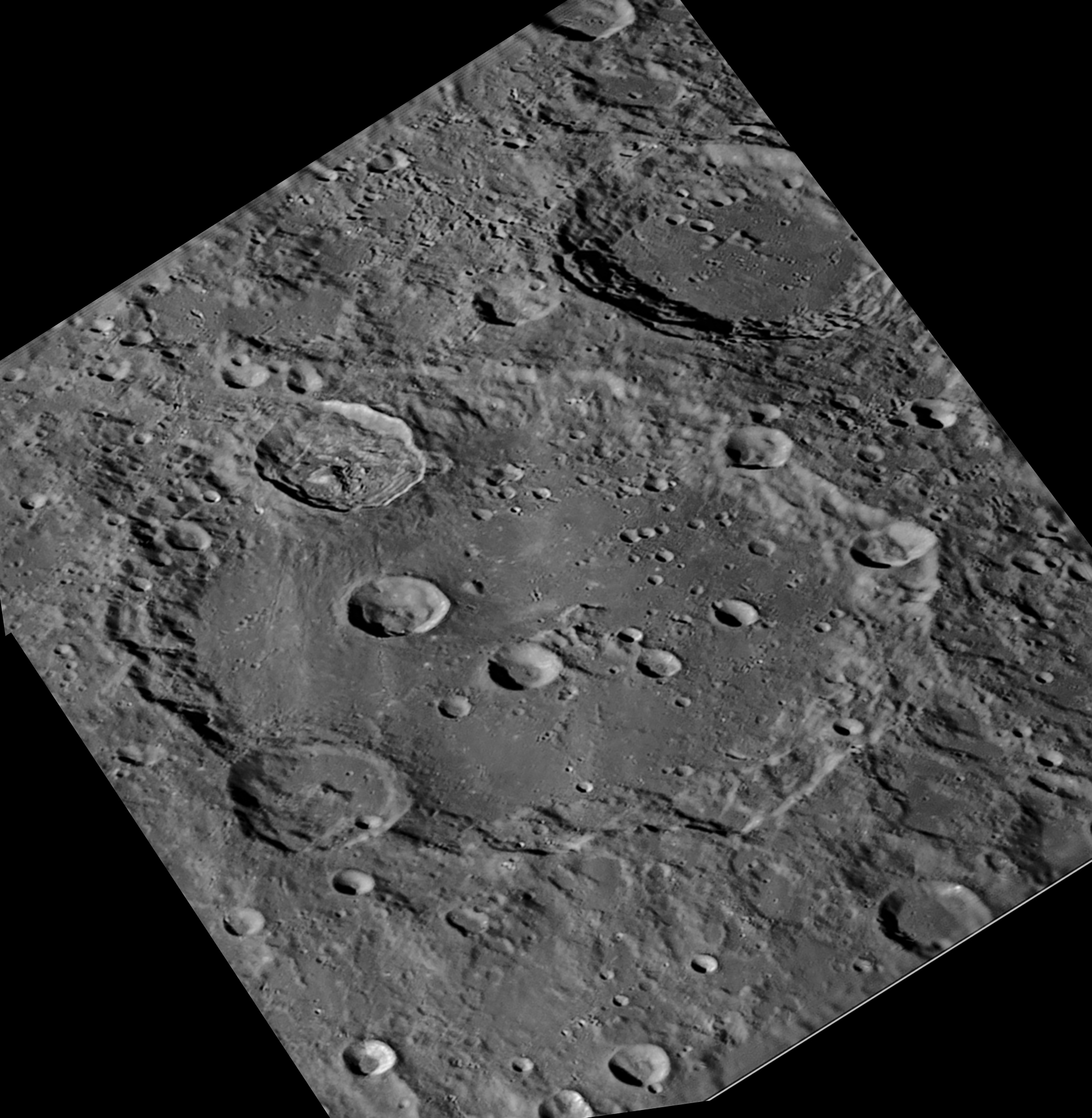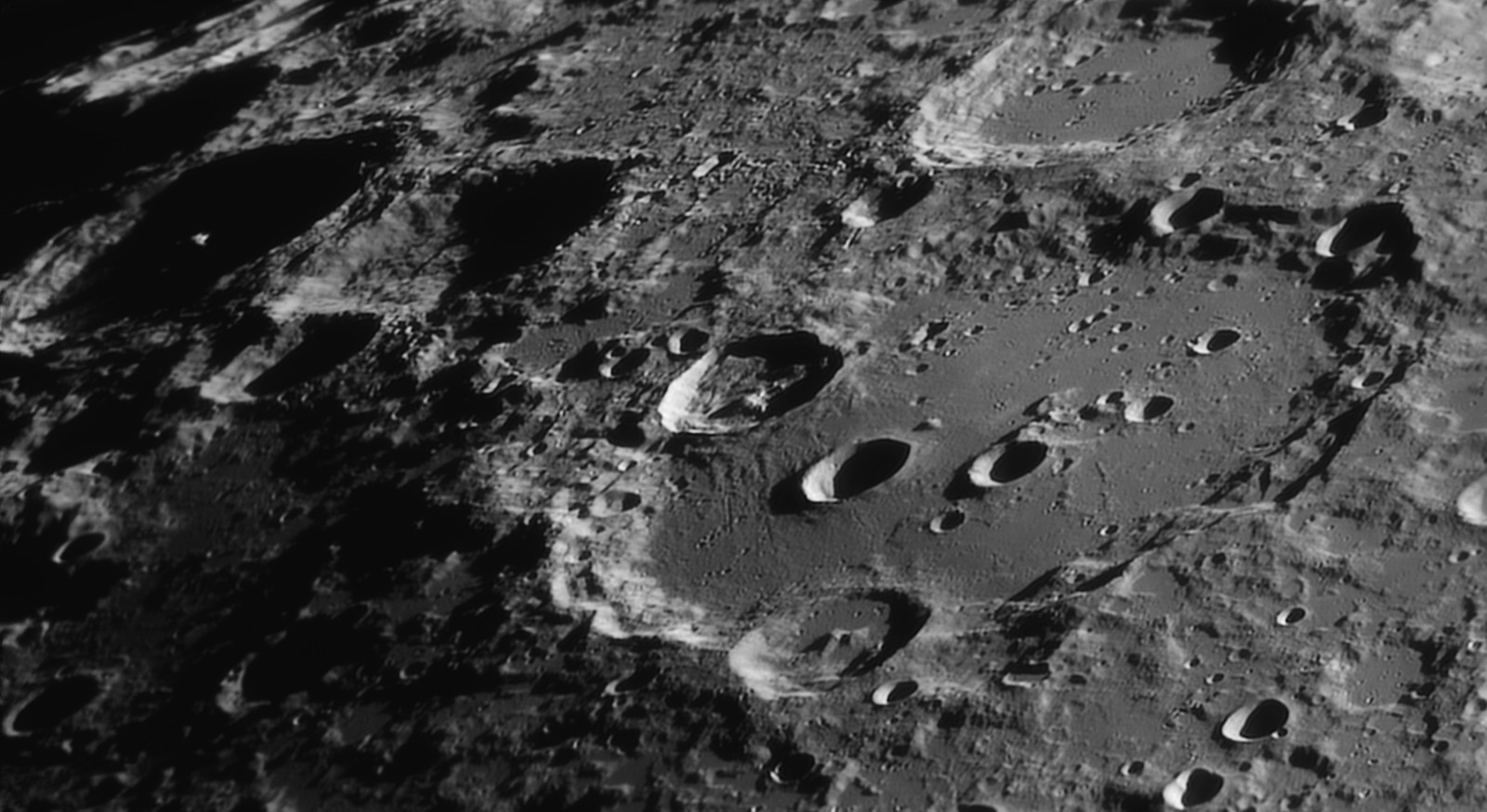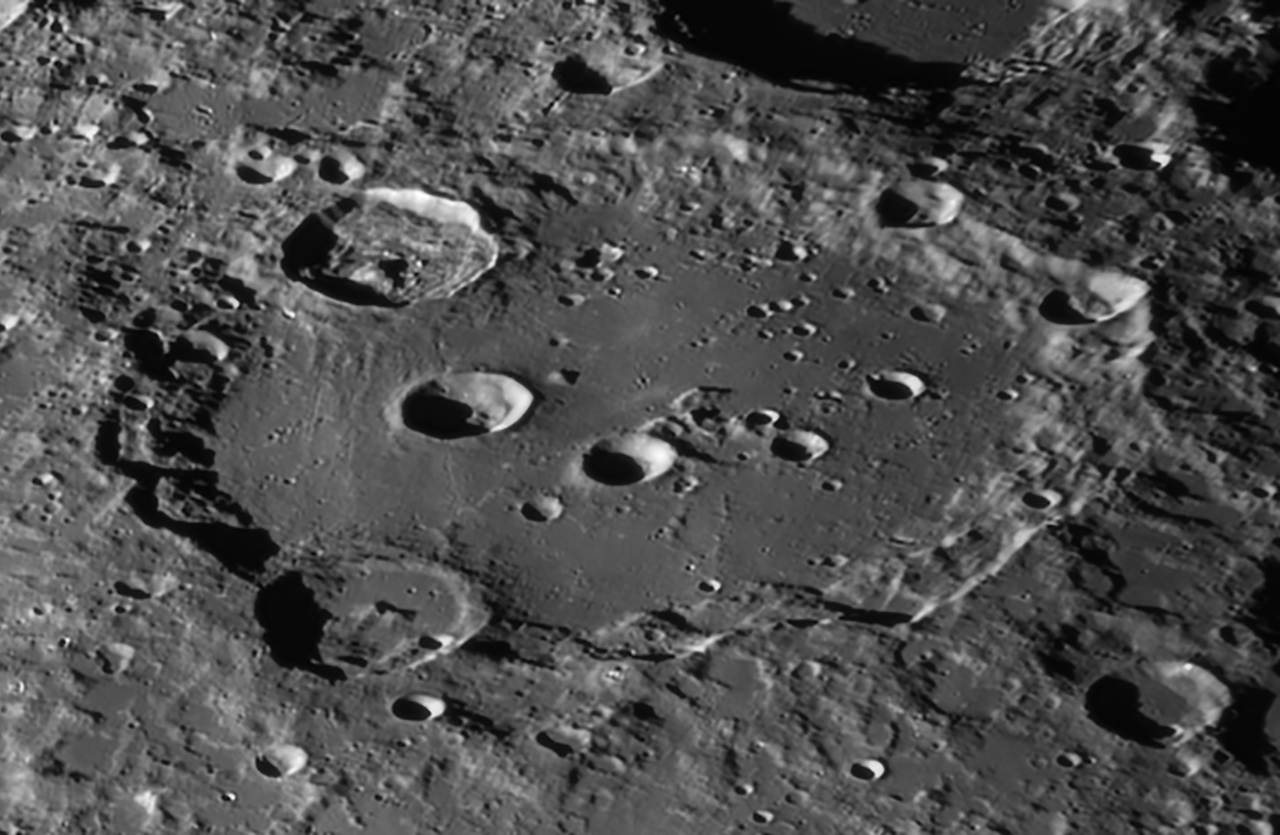Clavius è il secondo cratere, per dimensioni, sulla faccia visibile della Luna (il primo è Bailly). Intitolato da Riccoli al suo amico Christoph Klau (latinizzato Clavius), che fece parte della commissione che ideò il Calendario Gregoriano, Clavius è una notevole formazione telescopica. Il centro è occupato da una caratteristica catena di sei crateri, disposti ad arco e di dimensioni quasi esattamente decrescenti da E ad W. Clavius è un cratere vecchio, come dimostra l’erosione delle pareti, e la sua età è stimata pari a poco meno di 4 miliardi di anni.
(ENG) Clavius is the second largest crater on the visible face of the Moon (the first being Bailly). Named by Riccioli after his friend Christophorus Clavius, who was part of the commission that created the Gregorian Calendar, Clavius it is a remarkable telescopic formation. In the central area there’s a chain of six craters, arranged into an arc, and decreasing in size almost exactly from E to W. Clavius is an old crater, as indicated by the erosion of the walls, and its age is estimated to be around 4 billion years.
Clavius e Blancanus
Clavius (al centro) e Blancanus (in alto) sotto alti angoli di illuminazione solare (fase all’87%). Nonostante le condizioni di luce sfavorevoli, il Cassegrain ha registrato qui alcuni dettagli decisamente difficili, come i craterini e le rime nei pressi della parete Est. Ho usato un filtro Blu vista la buona stabilità atmosferica e l’altitudine molto elevata della Luna (70°).
(ENG) Clavius (center) and Blancanus (top) under high angles of solar illumination (phase at 87%). Despite the unfavorable light conditions, a number of difficult details have been recorded here by the Cassegrain, like the rills and the craterlets close to the eastern wall. I’ve been pushed to use a B filter due to good atmispheric stability and the very high altitude of the Moon (70°).
Ombre lunghe su Clavius e Moretus
Clavius e Moretus in condizioni di luce radente offrono un’affascinante veduta lunare.
(ENG) Clavius and Moretus under low illumination offer a very fascinating lunar view.


